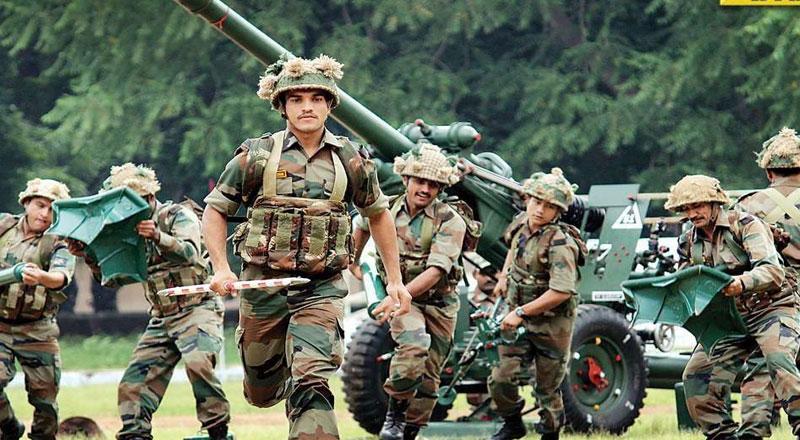India has finalised a road map to spend USD 100 billion in the next five to seven years to modernise the armed forces and bolster their combat capabilities over rivals in the region, according to an official document and military sources. The plan includes procurement of a range of weapons, missiles, air defence systems, fighter jets, submarines and warships, drones, surveillance equipment and developing infrastructure for extensive use of artificial intelligence, official sources said.
The Indian Defence Minister Rajnath Singh recently said that orders worth over $100 billion would be placed through the local defence sector in the next 5-10 years. The defence minister made these remarks during the Naval Commanders’ conference. In his address to the Commanders, Singh highlighted that economic prosperity and security are closely related while pointing out that the defence sector has emerged as a significant demand creator, bolstering the economy and ensuring the country’s development. “In the next 5-10 years, orders worth over $100 billion are expected to be placed through the defence sector, and it will become a major partner in the country’s economic development,” said Singh.
“Today, our defence sector is on the runway. Soon, when it takes off, it will transform the country’s economy. If we want to see India among the world’s top economic powers by the end of ‘Amrit Kaal,’ we must take bold steps towards becoming a defence superpower,” Singh asserted.
While Singh did not specify what types of weapon systems or products will be acquired through these “orders worth over $100 billion”, the Modi government has been issuing ‘Negative Lists’ of defence equipment banning their imports and encouraging indigenization of their production.
Four such lists were released in August 2020, May 2021, April 2022, and October 2022 to impose a phased import ban on weapons intended for indigenization over the next five to six years. These four lists encompass 411 types of weapons and platforms, comprising thousands of weapon sub-systems and components in fighter planes, aircraft, helicopters, submarines, tanks, infantry combat vehicles, electronic warfare systems, missiles, smart ammunition, rockets, and bombs.
Reports suggest that the items listed on the third list will be the most challenging to manufacture for the domestic defence industry because it comprises complex primary weapons and equipment such as lightweight tanks, naval utility helicopters, missiles, and artillery gun systems. On its end, the Modi government has consecutively increased the share of domestic procurement in the Indian military’s capital acquisition budget over the last three years.
In this year’s budget, the Modi government significantly increased this trend by allocating 75 percent (approx. ₹1,00,000 crore) of the defence capital procurement budget for domestic industry. The Indian government has, since 2020, earmarked more than ₹3,00,000 crores for the local defence industry.
Going by Rajnath Singh’s recent announcement of more than US $100 billion (₹8,20,605 crores) worth of orders for the local defence industry in 5-10 years, the Indian government could be expected to increase the share of the defence capital procurement budget for the domestic sector by around 14,000-20,000 crores per year.
“The current trend shows that the government prioritizes aircraft, UAVs, Tanks, Troop carriers, sub-systems, munitions, long, medium, and short-range missiles, and artillery. Submarines and ships may also make it to the list in the period,” expert said. The aircraft could include Tejas Variants, Twin Engine Deck Based Fighter (TEDBF), Advanced Medium Combat Aircraft (AMCA), transport aircraft like Dornier and TATA Airbus C295, and trainers. As for the Unmanned Aerial Vehicles (UAVs), the expert explained that they are an emerging category with shorter development times and faster deployments.
Rajnath Singh also hinted at a ‘fifth positive indigenization list’ during the five-day Aero India-2023 airshow held last month at Yelahanka Air Force Station in Bengaluru. General Electric’s F414 engines power India’s homegrown Tejas LCA. The US multinational conglomerate plans to produce these engines in India, which could jeopardize the Indian government’s long overdue plan to convert Tejas into a fully indigenized product.





